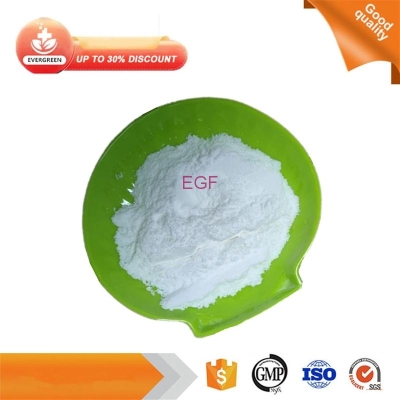-
Categories
-
Pharmaceutical Intermediates
-
Active Pharmaceutical Ingredients
-
Food Additives
- Industrial Coatings
- Agrochemicals
- Dyes and Pigments
- Surfactant
- Flavors and Fragrances
- Chemical Reagents
- Catalyst and Auxiliary
- Natural Products
- Inorganic Chemistry
-
Organic Chemistry
-
Biochemical Engineering
- Analytical Chemistry
- Cosmetic Ingredient
-
Pharmaceutical Intermediates
Promotion
ECHEMI Mall
Wholesale
Weekly Price
Exhibition
News
-
Trade Service
Bile duct dilatation (BDD) is a common radiological examination result of transabdominal ultrasound (US), abdominal computed tomography (CT) and magnetic resonance imaging (MRI), and usually requires further diagnostic evaluation
.
Although US is usually used as a preliminary imaging research method when confirming BDD, its limitations (including intestinal intervention and dependence on the operator) often prevent the bile ducts from being fully visualized, which hinders the identification of the cause
.
EUS is a highly sensitive imaging method that can be used to evaluate bile duct abnormalities.
It can also be used as a unique method for tissue sampling and staging of any identified malignant lesions
.
A number of studies have shown that EUS has significant accuracy and cost-effectiveness in diagnosing common bile duct stones.
Therefore, some scholars suggest that EUS be used as an alternative to ERCP or MRCP in the algorithm to deal with BDD suspected of biliary stones
.
The Muthusamy team at the University of California, Los Angeles evaluated EUS and EUS-guided fine needle aspiration (FNA) to determine the diagnosis rate of the cause of BDD and determine the cause of BDD in symptomatic and asymptomatic patients for patients who previously used non-diagnostic imaging investigation methods.
The underlying disease
.
BDD of unknown etiology is a common indication for further imaging with EUS
.
This study aims to evaluate the diagnosis rate of EUS for the cause of BDD in patients who have previously used non-diagnostic imaging investigation methods
.
Review the imaging images of patients with or without pancreatic duct dilatation (PDD) who were referred for EUS for BDD
.
If focal lesions are found, perform EUS-FNA
.
Patients who had been diagnosed with or strongly suggested BDD by imaging methods were excluded from the study
.
EUS results include extensive pancreaticobiliary duct and luminal pathology
.
The patients were divided into two groups, namely, the initial manifestations were jaundice or abnormal liver function test (LFT) and no jaundice and normal LFT, and subgroup analysis was performed
.
Among the 307 patients included, 213 were found to have the cause of BDD through EUS examination, and the diagnosis rate was 69.
4%
.
Patients with jaundice were more likely to receive EUS diagnosis than patients without jaundice (78.
8% vs 55.
3%, P <0.
01)
.
It is worth noting that 8.
1% of patients with normal LFT were diagnosed with malignant lesions by EUS
.
The patient’s age, use of anesthetics, concurrent PDD, and history of cholecystectomy did not seem to have an impact on the diagnostic rate of EUS
.
Figure: Examples of EUS findings in referral patients with BDD
.
(A) Normal common bile duct (CBD) diameter in patients without jaundice and normal LFT
.
Insertion shows normal ampulla
.
(B) CBD expanded to 12.
5 mm
.
The insertion showed the head of a pancreatic mass (*), and the biopsy confirmed it was adenocarcinoma
.
(C) CBD expanded to 9.
2 mm
.
Insertion shows 7.
1 mm distal CBD stones (*)
.
(D) CBD expanded to 16.
2 mm
.
Insertion revealed a distal CBD mass (*), and biopsy confirmed cholangiocarcinoma
.
EUS has a high diagnostic rate in the evaluation of BDD of unknown etiology, especially for patients with jaundice
.
Malignant tumors were detected by EUS in 8.
1% of the cohort of patients without jaundice or abnormal LFT
.
Therefore, it is still necessary to use EUS and EUS-FNA as a routine method for evaluating BDD of unknown etiology
.
You can scan the QR code below or
.
Although US is usually used as a preliminary imaging research method when confirming BDD, its limitations (including intestinal intervention and dependence on the operator) often prevent the bile ducts from being fully visualized, which hinders the identification of the cause
.
EUS is a highly sensitive imaging method that can be used to evaluate bile duct abnormalities.
It can also be used as a unique method for tissue sampling and staging of any identified malignant lesions
.
A number of studies have shown that EUS has significant accuracy and cost-effectiveness in diagnosing common bile duct stones.
Therefore, some scholars suggest that EUS be used as an alternative to ERCP or MRCP in the algorithm to deal with BDD suspected of biliary stones
.
The Muthusamy team at the University of California, Los Angeles evaluated EUS and EUS-guided fine needle aspiration (FNA) to determine the diagnosis rate of the cause of BDD and determine the cause of BDD in symptomatic and asymptomatic patients for patients who previously used non-diagnostic imaging investigation methods.
The underlying disease
.
BDD of unknown etiology is a common indication for further imaging with EUS
.
This study aims to evaluate the diagnosis rate of EUS for the cause of BDD in patients who have previously used non-diagnostic imaging investigation methods
.
Review the imaging images of patients with or without pancreatic duct dilatation (PDD) who were referred for EUS for BDD
.
If focal lesions are found, perform EUS-FNA
.
Patients who had been diagnosed with or strongly suggested BDD by imaging methods were excluded from the study
.
EUS results include extensive pancreaticobiliary duct and luminal pathology
.
The patients were divided into two groups, namely, the initial manifestations were jaundice or abnormal liver function test (LFT) and no jaundice and normal LFT, and subgroup analysis was performed
.
Among the 307 patients included, 213 were found to have the cause of BDD through EUS examination, and the diagnosis rate was 69.
4%
.
Patients with jaundice were more likely to receive EUS diagnosis than patients without jaundice (78.
8% vs 55.
3%, P <0.
01)
.
It is worth noting that 8.
1% of patients with normal LFT were diagnosed with malignant lesions by EUS
.
The patient’s age, use of anesthetics, concurrent PDD, and history of cholecystectomy did not seem to have an impact on the diagnostic rate of EUS
.
Figure: Examples of EUS findings in referral patients with BDD
.
(A) Normal common bile duct (CBD) diameter in patients without jaundice and normal LFT
.
Insertion shows normal ampulla
.
(B) CBD expanded to 12.
5 mm
.
The insertion showed the head of a pancreatic mass (*), and the biopsy confirmed it was adenocarcinoma
.
(C) CBD expanded to 9.
2 mm
.
Insertion shows 7.
1 mm distal CBD stones (*)
.
(D) CBD expanded to 16.
2 mm
.
Insertion revealed a distal CBD mass (*), and biopsy confirmed cholangiocarcinoma
.
EUS has a high diagnostic rate in the evaluation of BDD of unknown etiology, especially for patients with jaundice
.
Malignant tumors were detected by EUS in 8.
1% of the cohort of patients without jaundice or abnormal LFT
.
Therefore, it is still necessary to use EUS and EUS-FNA as a routine method for evaluating BDD of unknown etiology
.
You can scan the QR code below or







